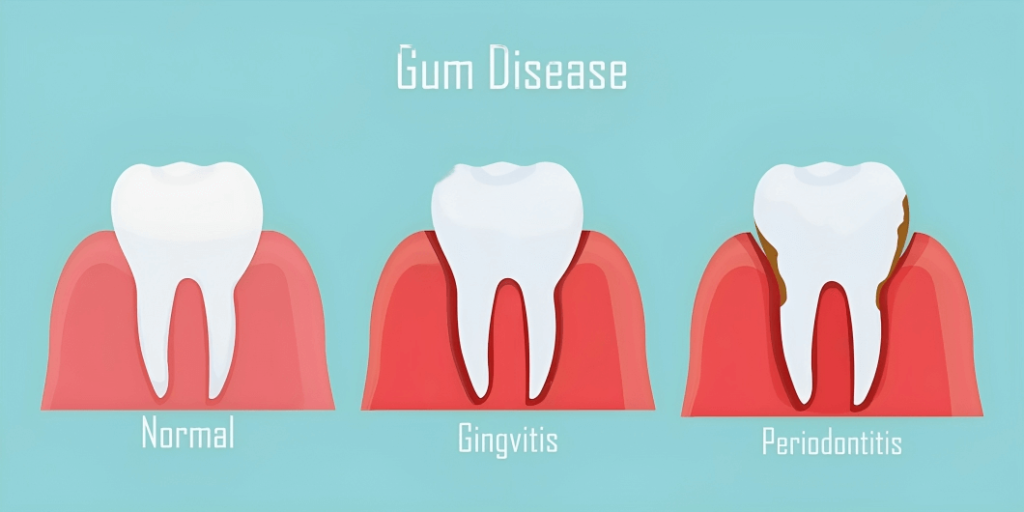Gum disease, also known as periodontal disease, is a prevalent dental condition that can significantly impact your oral health. It is characterized by the inflammation of the tissues supporting your teeth, including the gums and bone.

Symptoms of Gum Disease
Early detection of gum disease is crucial for effective management. Here are some common symptoms to watch out for:
- Bleeding Gums: One of the earliest signs is bleeding gums, particularly during brushing or flossing.
- Swollen or Red Gums: Inflammation and redness of the gums may indicate gum disease.
- Persistent Bad Breath: Halitosis can result from untreated gum disease.
- Receding Gums: Gums pulling away from teeth, exposing tooth roots.
- Tooth Sensitivity: Increased sensitivity to hot or cold temperatures.
- Loose Teeth: As gum disease progresses, it can lead to tooth mobility.
Causes of Gum Disease
Understanding the causes of gum disease is essential for prevention. Several factors contribute to its development, including:
- Inadequate Oral Hygiene: Not brushing and flossing properly can lead to plaque buildup, a primary cause of gum disease.
- Tobacco Use: Smoking or chewing tobacco increases the risk of gum disease.
- Genetic Predisposition: Some individuals may have a genetic predisposition to gum disease.
- Medical Conditions: Certain medical conditions like diabetes can increase susceptibility to gum disease.
- Poor Nutrition: A diet lacking essential nutrients can weaken the immune system and gums.
- Hormonal Changes: Hormonal fluctuations, such as those during pregnancy or menopause, can increase the risk.
Stages of Gum Disease
Gum disease progresses through different stages, each with varying degrees of severity:
- Gingivitis: The earliest stage, characterized by gum inflammation. Gingivitis is often reversible with proper oral care.
- Periodontitis: As gum disease advances, it can lead to the destruction of bone and tissues supporting the teeth.
- Advanced Periodontitis: In the most severe stage, significant damage to the bone and tooth loss can occur.

Treatment Options for Gum Disease
Effective treatment depends on the stage and severity of gum disease. Here are some treatment options:
- Scaling and Root Planing: A deep cleaning procedure to remove plaque and tartar from below the gumline.
- Laser Therapy: Advanced laser treatments can target infected areas and promote tissue regeneration.
- Surgical Interventions: In severe cases, surgical procedures may be necessary to restore gum and bone health.
- Medications: Antibiotics or antimicrobial mouthwashes may be prescribed to control infection.
- Lifestyle Changes: Improving oral hygiene practices and adopting a healthier lifestyle can aid in gum disease management.
Incorporating Porcelain and Aesthetics into Gum Disease Treatment
Porcelain veneers offer an excellent solution for enhancing the aesthetics of your smile, especially if gum disease has left its mark. Our San Diego Dentist and Clairemont Dentist teams specialize in cosmetic dentistry, including veneers, to restore your smile’s natural beauty.
Gum disease is a serious oral health issue that requires prompt attention. Serena Family & Cosmetic Dentistry is your trusted partner in San Diego for gum disease treatment and cosmetic dentistry needs. Don’t let gum disease compromise your smile—schedule an appointment with us today!



